Abstract
Probenecid may elevate the cerebrospinal fluid (CSF) concentration of penicillin G by inhibiting the excretion of organic acids from CSF. We have studied this phenomenon with various penicillin and cephalosporin derivatives. Penicillin concentrations were determined in rabbits under steady-state conditions before and after intravenous probenecid administration. With both low-dose and high-dose probenecid, CSF penicillin levels increased two to three times as did CSF concentration as a percentage of serum level. The same probenecid effect was consistently demonstrated in animals with experimental pneumococcal meningitis. Probenecid likewise increased the CSF concentration of ampicillin, carbenicillin, nafcillin, cephacatrile, and cefazolin. Probenecid may prove useful in certain bacterial infections where high CSF antibiotic levels are necessary.
Full text
PDF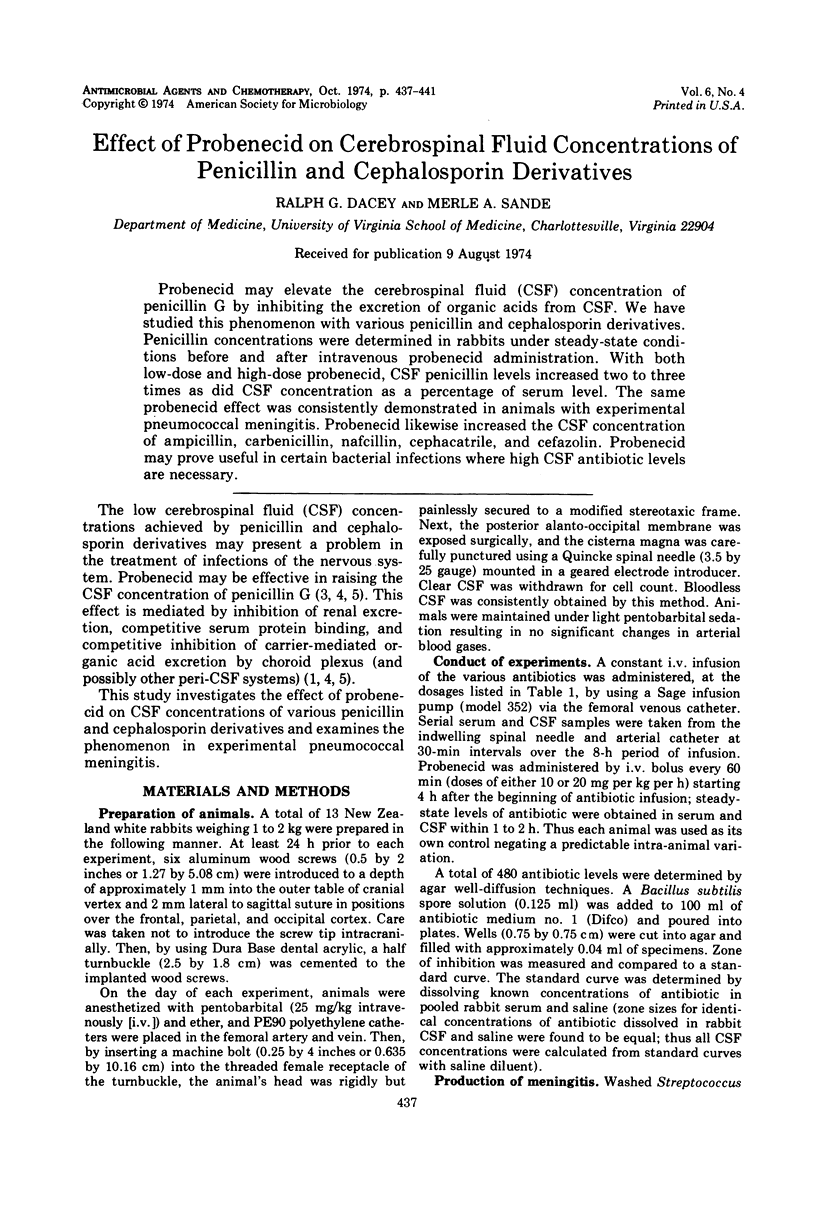
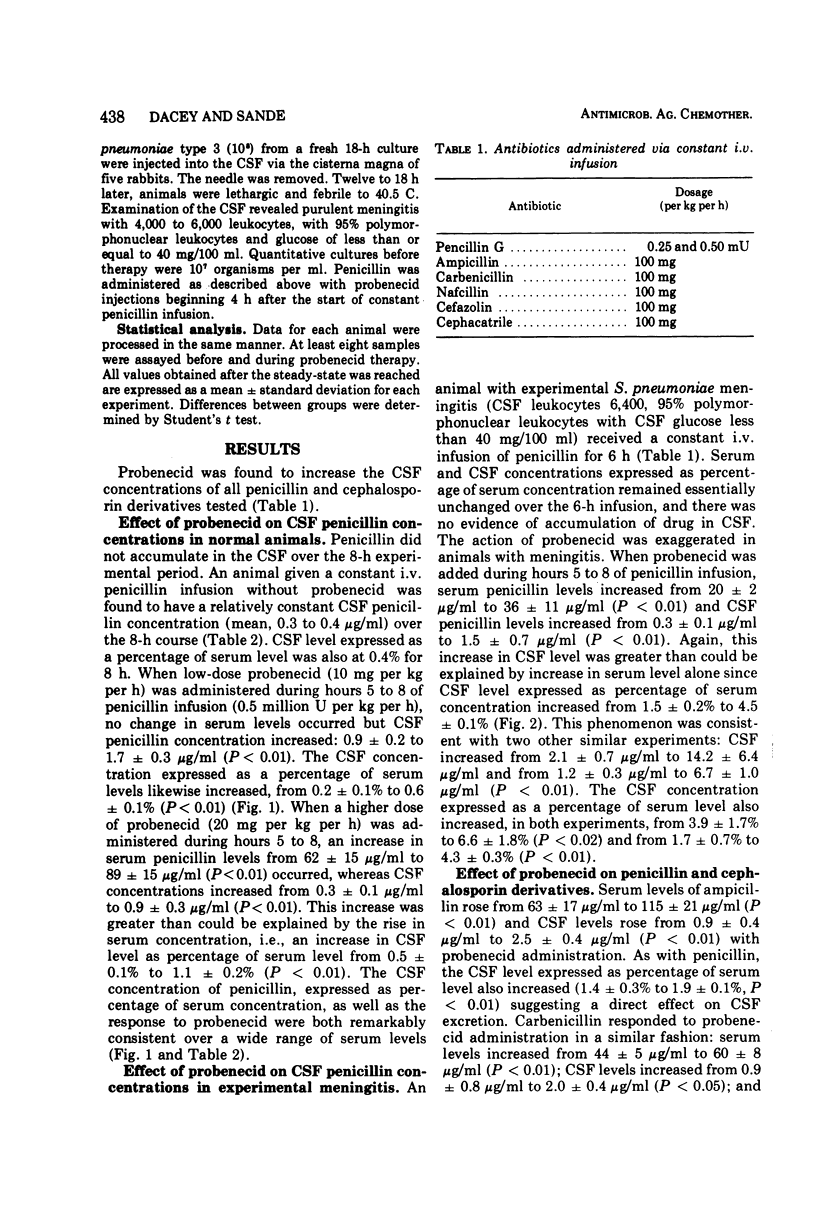
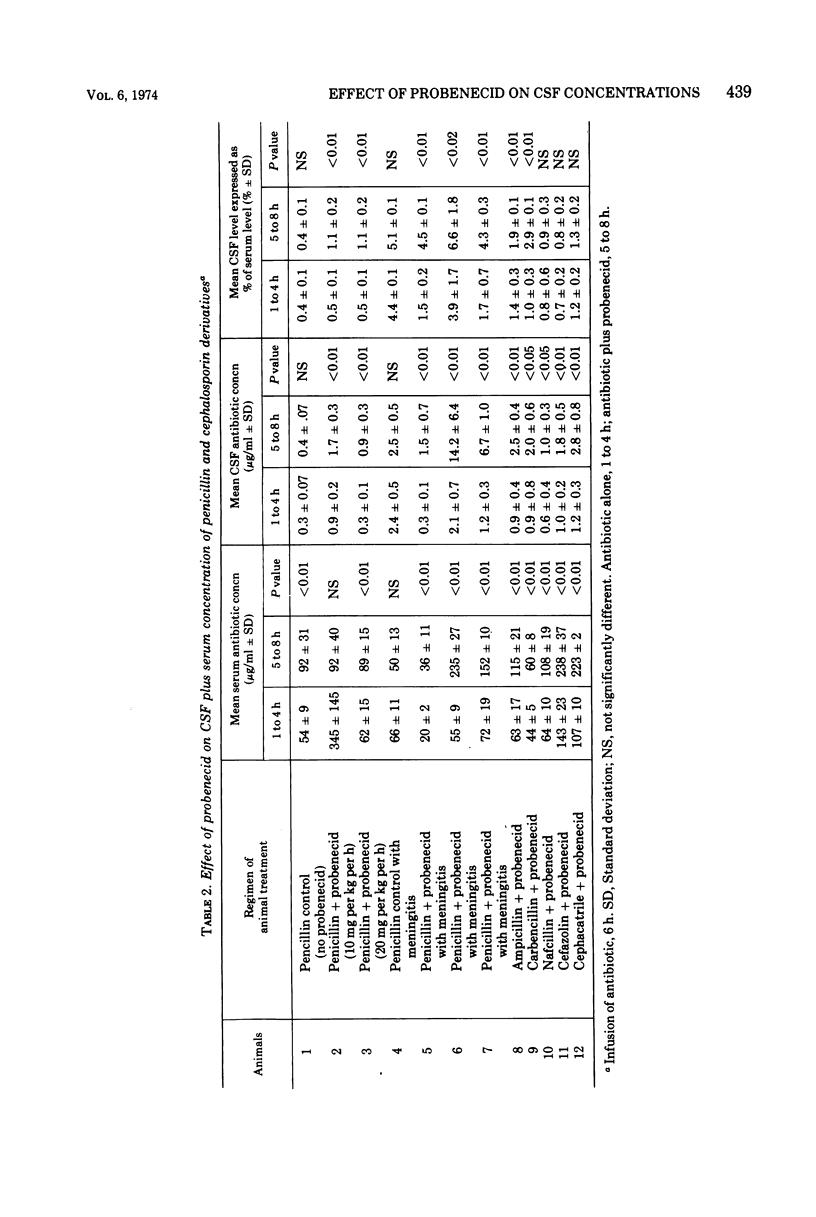
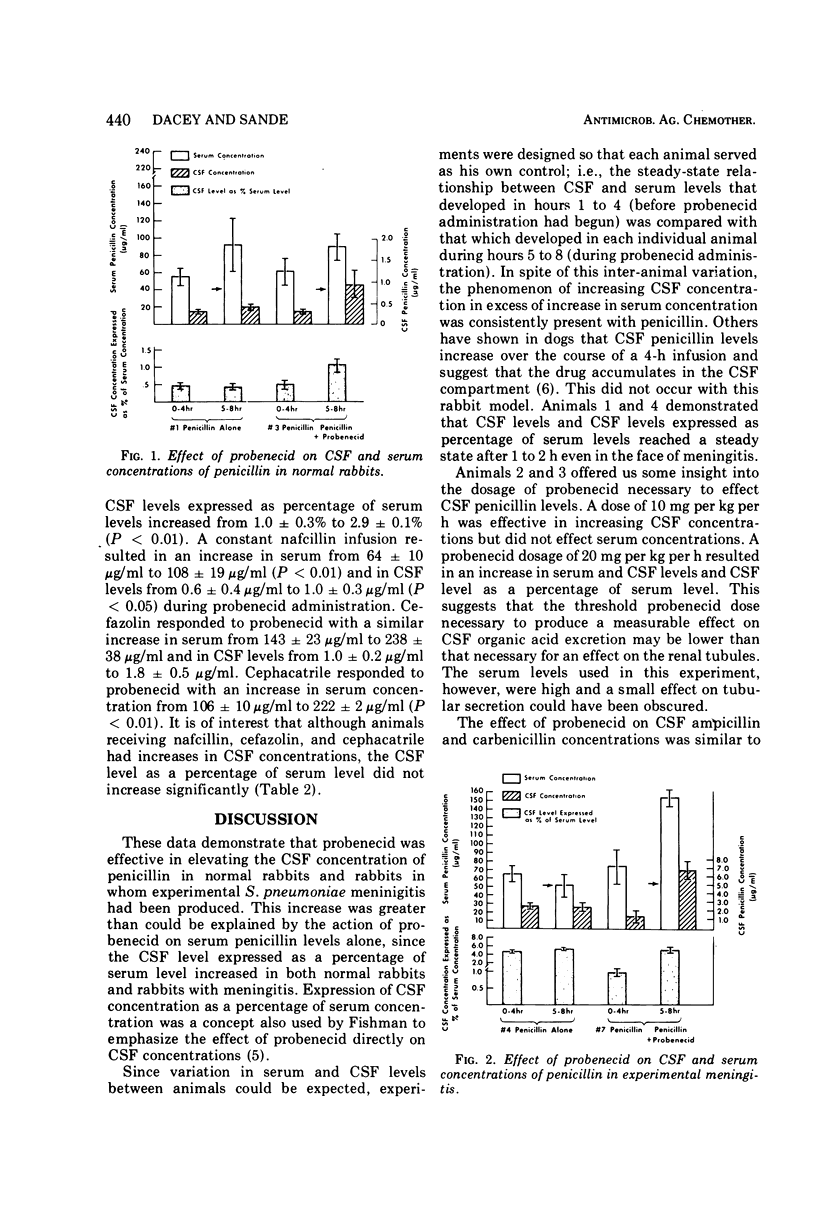
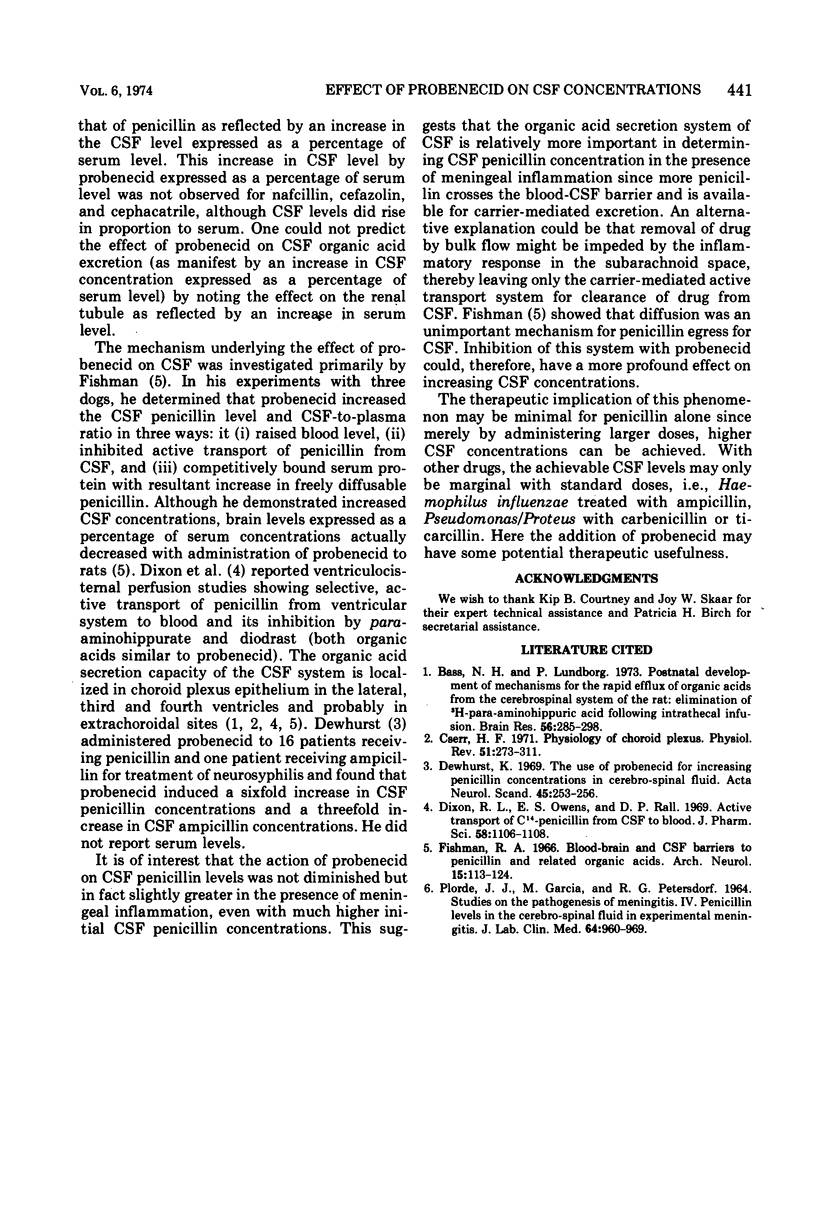
Selected References
These references are in PubMed. This may not be the complete list of references from this article.
- Bass N. H., Lundborg P. Postnatal development of mechanisms for the elimination of organic acids from the brain and cerebrospinal fluid system of the rat: rapid efflux of ( 3 H)para-aminohippuric acid following intrathecal infusion. Brain Res. 1973 Jun 29;56:285–298. doi: 10.1016/0006-8993(73)90342-9. [DOI] [PubMed] [Google Scholar]
- Cserr H. F. Physiology of the choroid plexus. Physiol Rev. 1971 Apr;51(2):273–311. doi: 10.1152/physrev.1971.51.2.273. [DOI] [PubMed] [Google Scholar]
- Dixon R. L., Owens E. S., Rall D. P. Evidence of active transport of benzyl-14C-penicillin from cerebrospinal fluid to blood. J Pharm Sci. 1969 Sep;58(9):1106–1109. doi: 10.1002/jps.2600580914. [DOI] [PubMed] [Google Scholar]
- Fishman R. A. Blood-brain and CSF barriers to penicillin and related organic acids. Arch Neurol. 1966 Aug;15(2):113–124. doi: 10.1001/archneur.1966.00470140003001. [DOI] [PubMed] [Google Scholar]
- PLORDE J. J., GARCIA M., PETERSDORF R. G. STUDIES ON THE PATHOGENESIS OF MENINGITIS. IV. PENICILLIN LEVELS IN THE CEREBROSPINAL FLUID IN EXPERIMENTAL MENINGITIS. J Lab Clin Med. 1964 Dec;64:960–969. [PubMed] [Google Scholar]


